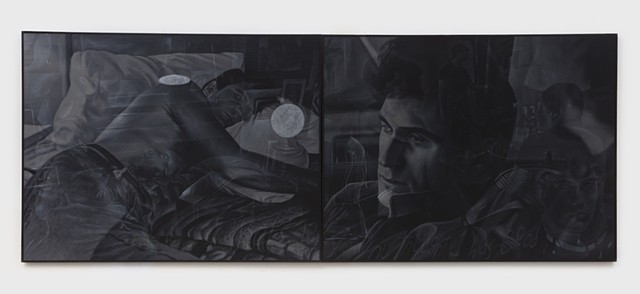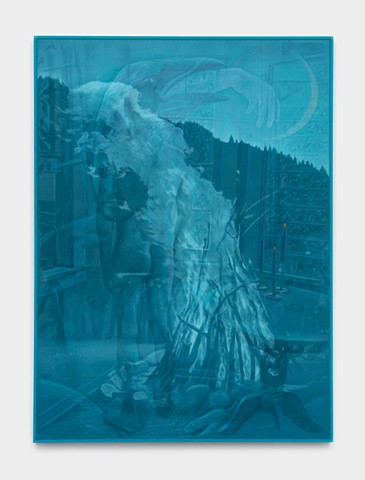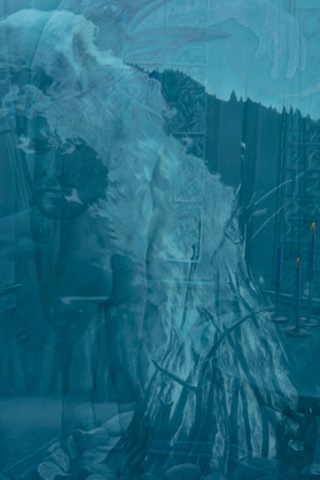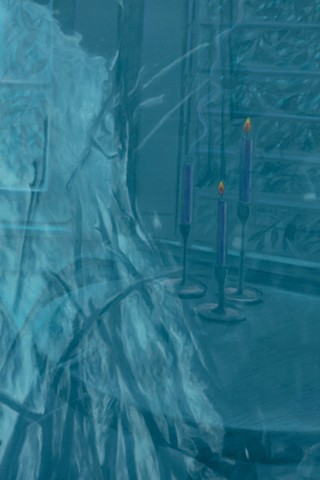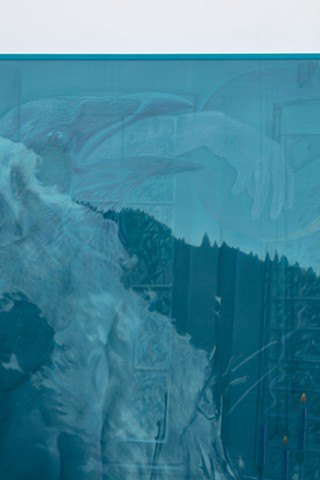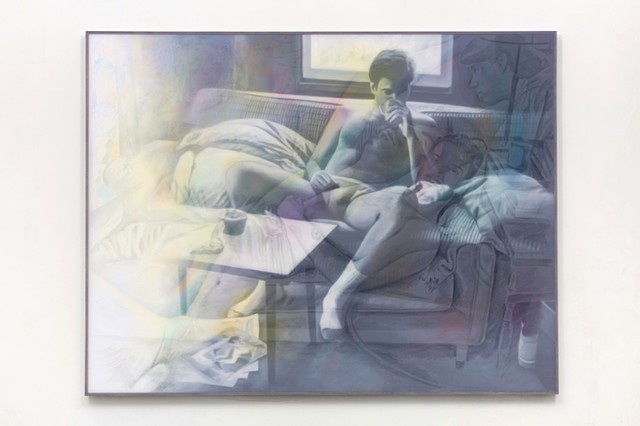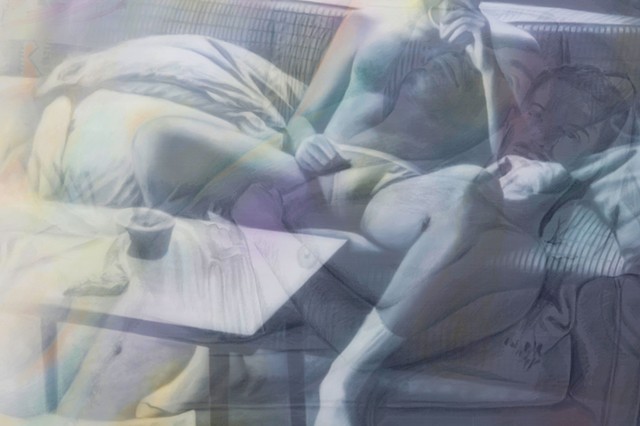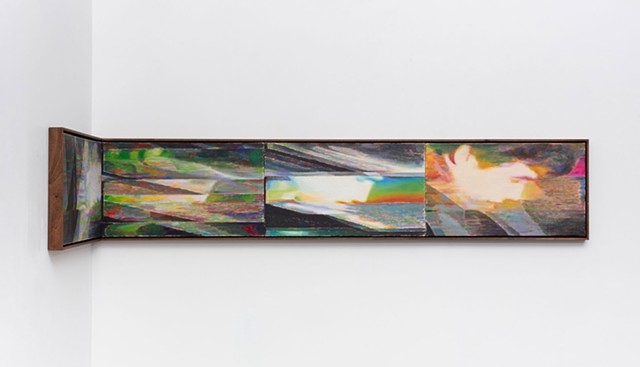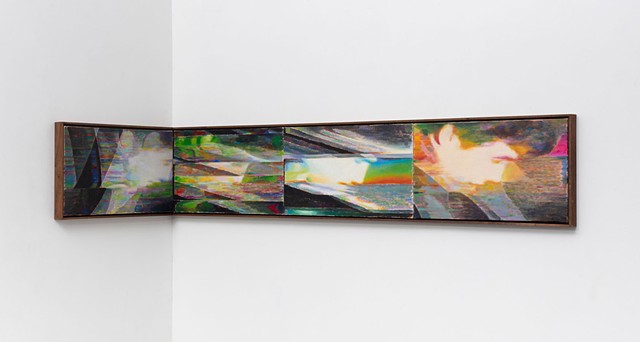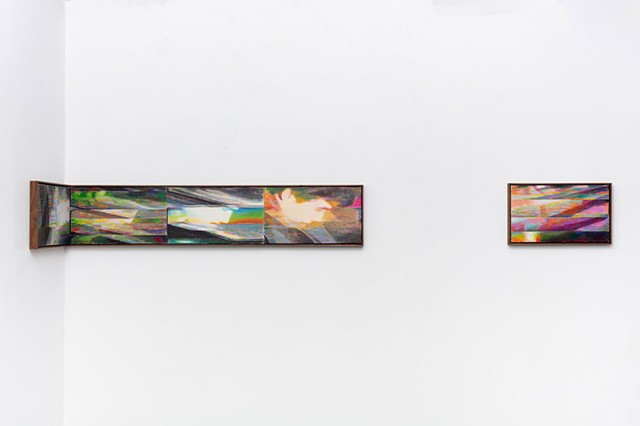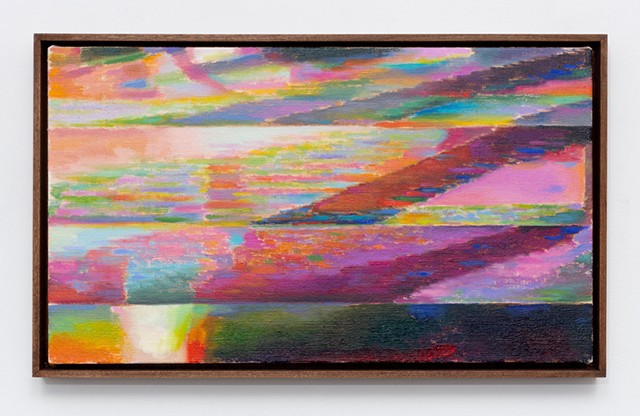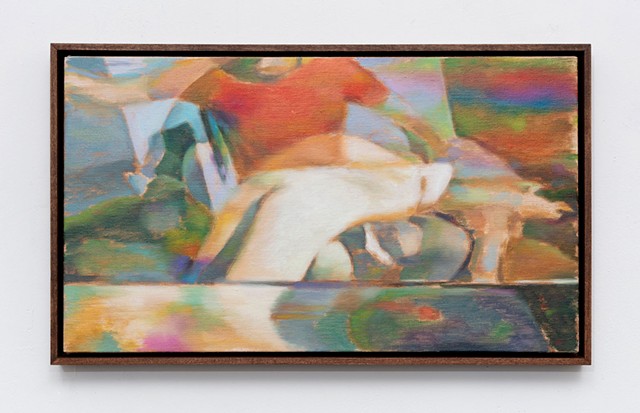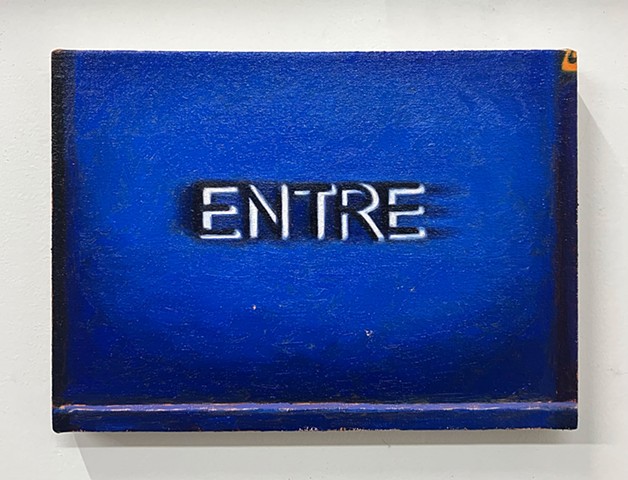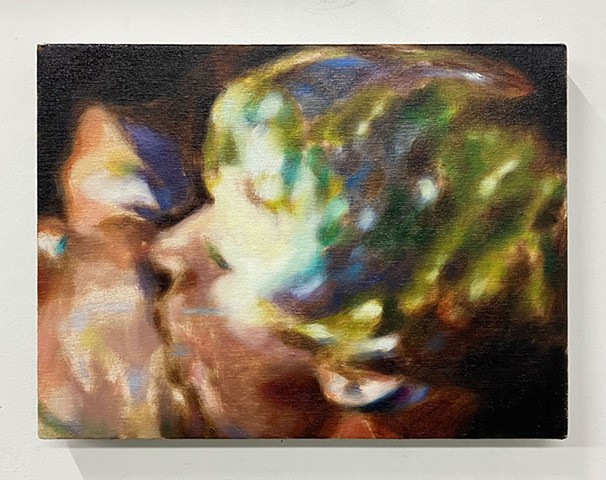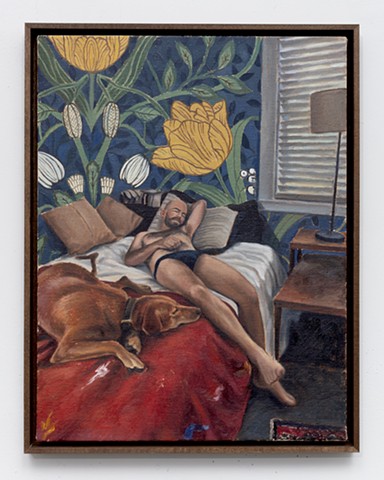Love Solver, NOON Projects, 2023
There is something disquieting about Matt Lifson’s new body of work. The subject matter of his paintings, drawn freely from art and life, slasher films and gay porn, hovers in an uncanny zone between pain and pleasure, horror and horniness. Here we find documentary stills featuring an old lover who took his own life, a young girl possessed by a demon, a carnivorous bird plucked from Hieronymus Bosch’s Garden of Earthly Delights, heavy cocks, mind-controlling parasites, a fatal gender reveal, the teenage homosociality of vampires, and the punishment-cum-frisson of a good spanking.
Lifson wants us to look, and to look hard, at this hallucinatory mix of psychosexual imagery. But to stop at the iconography of the paintings, alluring as it is, would be to miss the tremendous complexity of their mediality that activates the images for the beholder. In several of his works, Lifson draws with wax pastels over polyester fabric stretched a short distance above a painting beneath executed in oil on canvas like a layered palimpsest. The optical effect of this simple technique, which is almost impossible to register photographically, evokes a kind of phantasmagoria in which images alternately dissolve and resolve depending on the standpoint of a mobile viewer. Like the open-weave fabric of theatrical scrims invented around the turn of the nineteenth century, Lifson’s polyester screens at once construct and collapse distinctions between surface and depth, visibility and invisibility. They are almost concrete materializations of what Jacques Lacan called an “image screen” where the subject-as-viewer becomes the subject-as-viewed. As Hal Foster observes, “Traditionally in Western philosophy, tropes like ‘veils’ and ‘screens’ figure as blinds that obscure truth, illusions that mystify reality: we are supposed to shed them…In Lacan, on the contrary, the screen is a necessary protection without which we are at the mercy of the real.”
Drawn to the elusive or fugitive image—the kaleidoscopic montage, or entoptic phenomena like retinal afterimages produced by an external stimulus—Lifson pushes his paint to the almost impressionistic brink of illegibility. In a sequence of four paintings whose frames, both actual and virtual, comprise the durational continuity of a single second of a porn that had been rerecorded several times over, oil paint translates the visual artifacts of the interlaced scan lines of video. Evoking the dystopian neon hues and gauzy feel of an old VHS tape, Lifson’s picture registers what Jacques Derrida describes as the latent spectrality of any media archaeology: “Contrary to what we might believe, the experience of ghosts is not tied to a bygone historical period, like the landscape of Scottish manors, etc., but on the contrary, is accentuated, accelerated, by modern technologies like film, television, the telephone. These technologies inhabit, as it were, a phantom structure. …When the very first perception of an image is linked to a structure of reproduction, then we are dealing with the realm of phantoms.” A similar kind of “phantom structure” haunts the background of Lifson’s paintings through the overlapping texture of queer temporalities in a rhythmic play of anachronisms that models what counts as lived experience.
Patrick R. Crowley






